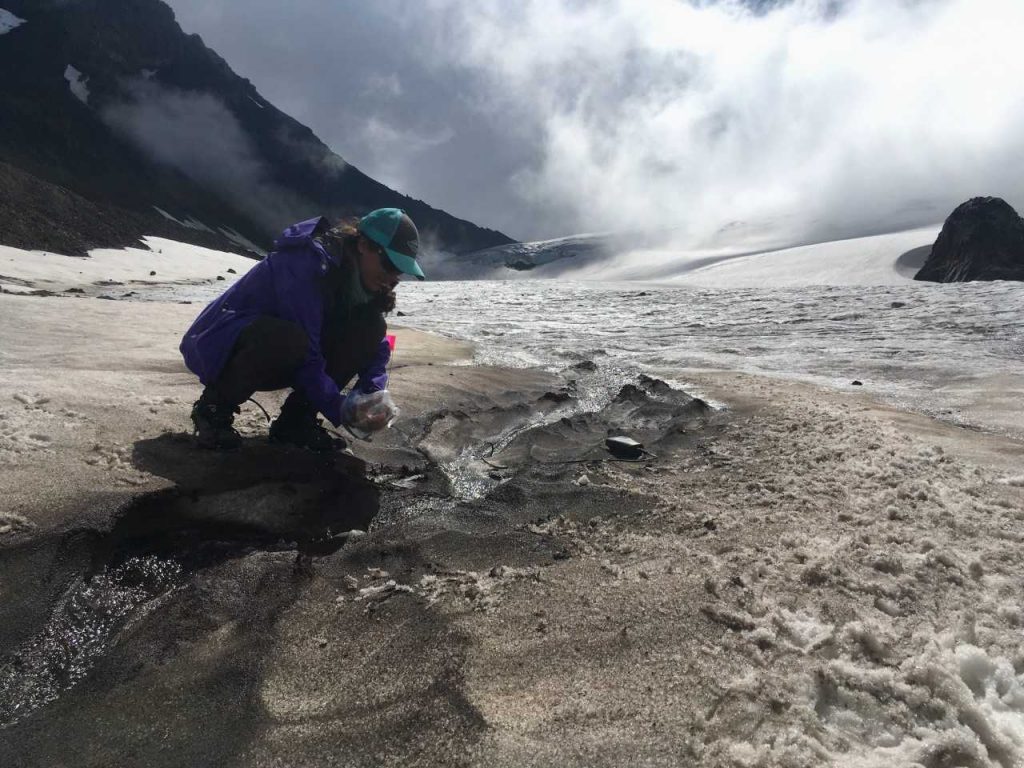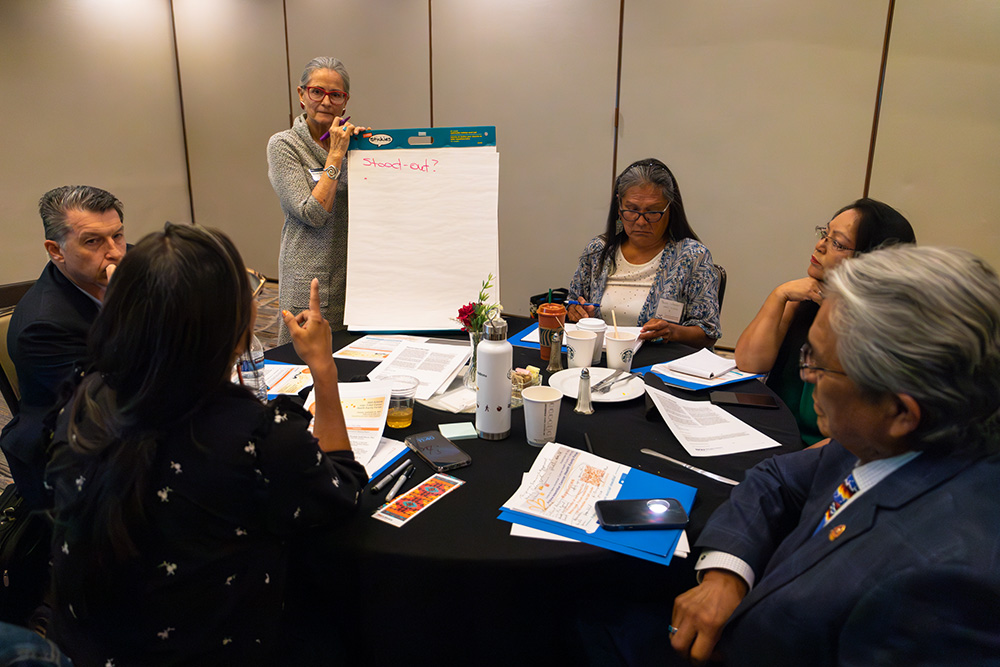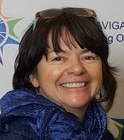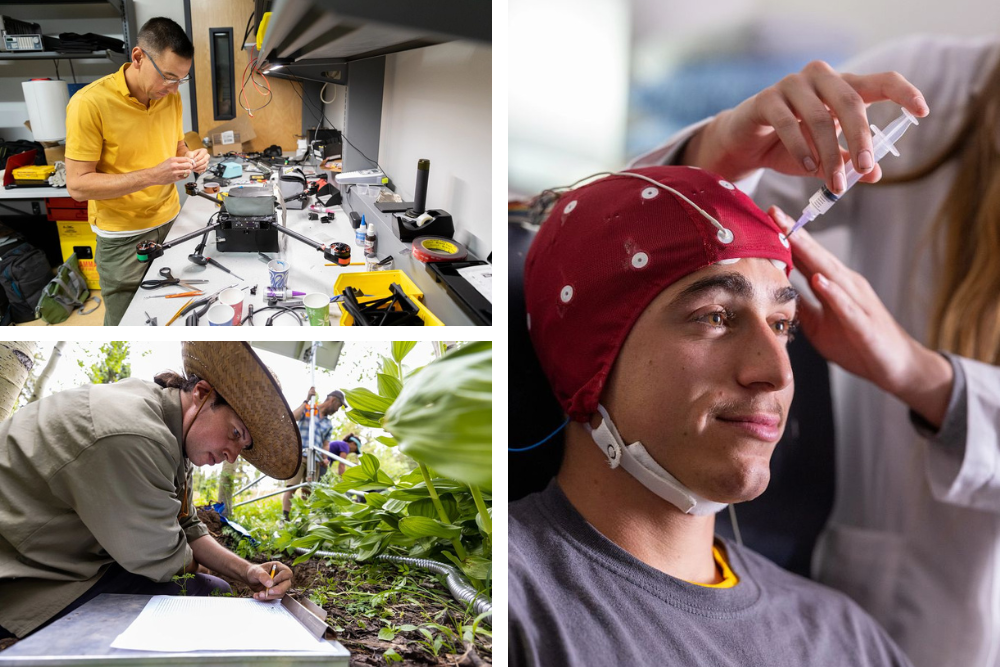NAU conducted a record-breaking amount of research in fiscal year 2023, expending $77.5 million in research that ranged from looking for signs of life on other planets to investing in health equity among rural and underserved communities to testing creative ways to pull carbon dioxide out of the atmosphere.
Those expenditures, largely fueled by a 16% yearly increase in federal awards, come as NAU has reemphasized its commitment to cultivating and elevating the excellence of classroom instruction and providing students with opportunities they need to succeed after leaving NAU. University leaders say it is a testament to the teacher-scholar model laid out in Elevating Excellence – NAU 2025.
“NAU attracts faculty and staff who believe deeply in NAU’s student-focused mission but also feel confident that they can thrive at the highest levels in their research and scholarly endeavors, and this combination is something that makes NAU unique,” said Jason Wilder, the vice president for research. “In addition, many of NAU’s research strengths are aligned with our priorities in multiple dimensions, including helping to better the communities we serve and finding new ways to engage our students and support their success.”
NAU’s overall FY2023 expenditures represent a $10.8 million increase over last year; Wilder said this is the largest year-over-year increase in terms of total dollars in the university’s history. Funding from the federal government, including the National Science Foundation, NASA and the Department of Defense, among many others, accounted for about two-thirds of the total research dollars expended by NAU—at $50.5 million, those expenditures broke the record set last year.
At the same time, NAU has held institutional investments in research steady in the last few years and seen funding from TRIF (the Technology and Research Innovation Fund, sponsored by the Arizona Board of Regents) spread across priority areas beyond research, including boosting Arizona’s workforce development, improving student access to NAU and community-focused grant projects. The sharp increase in federal funding demonstrates that NAU’s researchers are successfully competing for awards against peers from universities throughout the nation.
These numbers also come on the heels of NAU’s projected achievement of R1 research status in 2025.
“We are doing research that is changing the world—making it a more informed, cleaner, safer, more inclusive place for everyone,” NAU President José Luis Cruz Rivera said. “That work is recognized by the influx of federal dollars we’re seeing coming to NAU, addressing everything from national security to developing vaccines to cleaning up the environment and so much more. That we can do this pioneering research while at the same time prioritizing student success and workforce readiness speaks to the commitment of the entire NAU community.”
Meet some of NAU’s researchers:
Discovering space on Earth

We have yet to put a human on Mars, but we know a surprising amount about its surface. Telescopes and rovers are responsible for much of that knowledge, but the Earth holds clues about the Red Planet as well. Rutledge’s research focuses on using Earth analogs to understand past and present environments on other planets. One example: Using remote sensing, environmental chemistry, spectroscopy and other measurements, she studies subglacial alteration to understand the cryosphere of Mars. This research has taken place in Iceland, Greenland and Arctic Sweden.
She is the principal investigator of three grant-funded projects totaling almost $2 million:
- Between a Rock and a Frozen Place: Studying cold-based glacial weathering products (co-PI Mark Salvatore)
- What makes an esker?: Studying eskers, which indicate glacial meltwater (co-PI Christopher Edwards)
- Ice, ice, rock: Analog studies: A five-year NASA Planetary Science Early Career Award that funds equipment, collaborations, future proposals and more.
This work helps researchers understand the past climate of Mars and the changing climate of Earth, Rutledge said. In the past, Mars looked wildly different, so by understanding how its climate changed and how the surface of Mars evolved, we can better understand our own home planet.
“As a Latina in planetary science, I take my role of mentoring and amplifying new voices, especially those of young women, very seriously,” she said. “Our understanding of our work increases in leaps and bounds when we include people from many different backgrounds— diverse voices literally mean better science.”
Health equity among Native American populations

Indigenous peoples in the United States have long carried a burden of health inequity; poor access to health care, disproportionately high exposure to carcinogens and living in food deserts are just a few of the contributors to inequity. CHER’s research focuses broadly on ways to improve health equity through providing culturally appropriate education and resources, training public health practitioners and working with Native nations to document the specific needs of these communities. Teufel Shone’s work is largely chronic disease prevention and management research and reducing the unequal burden of cancer among Indigenous communities.
Large grants and projects on which Teufel-Shone is the PI FY23 include:
- A $4 million grant from the American Cancer Society to fund the Center for Native American Cancer Health Equity (C-NACHE) for four years
- A $5 million, four-year grant from the National Institute of General Medical Sciences for the Navajo Nation Native American Research Center for Health (NARCH), an effort that is led by Diné College to build a public health education pathway for Navajo scholars from high school to early-stage investigators
- Several subawards with the Hualapai Tribe in northwest Arizona for projects funded by Indian Health Services and the Centers for Disease Control and Prevention
“Structural racism—discrimination and marginalization experienced by Native Americans as an ethnic group–is an upstream factor that underlies cancer risk and risks to health overall,” Teufel-Shone said. “Improving cancer screening rates among Native Americans, increasing education about tribe-specific cancer trends, and addressing disproportionately high exposure to carcinogenic environmental contaminants are just a few of C-NACHE’s aims.”
Making society more inclusive for people with disabilities

People with disabilities remain an underserved and underrecognized group, even in the equity and access space, Roberts said. The IHD covers an array of disability services and education, all focused on giving people of all ages who have disabilities equitable access to health care, education and the opportunity to live the lives they want. Those served range from young children who may participate in a diagnostic clinic to providing culturally responsive vocational rehabilitation (VR) training and technical assistance to Native American VR programs throughout the country.
IHD is supported by dozens of grants from a variety of institutions, including the U.S. Department of Education, the National Science Foundation and others. In FY23, the institute’s budget included almost $5 million in federal grant-funded projects. They submitted 28 grant proposals that year, with 17 of those proposals funded. That funding allowed for groundbreaking research and programs that helped people with disabilities get the access and tools they needed to get an education, find a job and more. IHD aided 14,981 participants in 45 projects and 732 activities that year.
“We’re seeing an increase in awareness that people with disabilities, when barriers imposed by society such as inaccessible buildings and negative attitude are removed, the world becomes more inclusive, and people with disabilities are then successful in achieving their self-determined goals,” Roberts said. “What does it mean to be inclusive? It varies from person to person, but if you want to be at the table, and be there as a contributing member, barriers should be removed and support provided for you to do so.”
Heidi Toth | NAU Communications
(928) 523-8737 | heidi.toth@nau.edu




